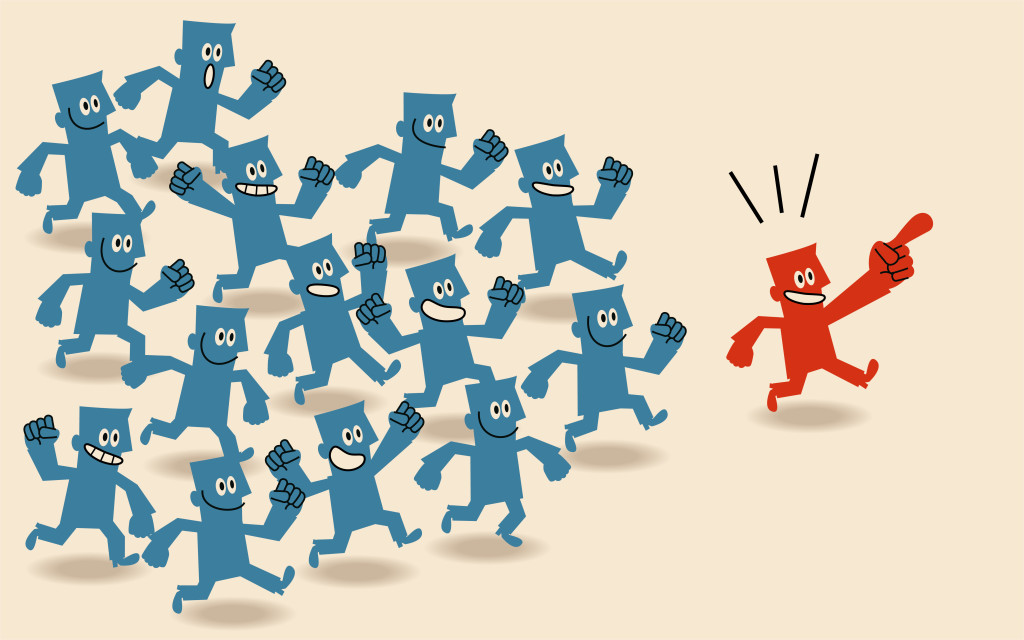Brand Behavior Matters for Transforming your Business
Brand Behavior Matters for Transforming your Business

To Transform Your Brand, Transform Your Brand Behavior
In the end, brand behavior is what drives results. No matter how smart and inspired your brand strategy may be, it’s just strategy. And oftentimes, it’s just not enough. In fact, we’ve seen many brand strategies fall short because they failed to move beyond brand identity and communications, and didn’t provide the guidelines, tools, and processes needed to actually bring the brand’s defining attributes to life through meaningful behavior and action.
Brand behavior is all about how your brand reaches out to people and how they respond back to you. In reality, people never experience brand strategies. Instead, they experience brand moments. These brand moments are what bring the strategy alive. So if you want to transform your brand and reap the benefits of this transformation, you have to focus on these brand moments. By honing in on how your brand behaves at every touchpoint, brand behavior is what will ultimately take your brand strategy further than the “brand deck.” The goal of brand behavior is two-fold: make customers more satisfied and loyal, while creating an aligned, ambitious, and meaningful workplace that behaves in line with your brand.
Workplace Behavior
Because behavior is learned and often mimicked, people from childhood onwards depend on elders, role models, and/or authority figures to show them the “right” way to behave. And patterns of behavior operate the same way within a workplace. They trickle down. This means workplace behavior is self-propagating, infectious, and often indicative of the culture of an organization. In fact, if your brand isn’t living up to its potential, the cause may very well be workplace behavior does not pay off why your brand matters. When you add meaning to workplace behavior, you add meaning to the brand.
No Small Task
Modifying behavior internally is key to shifting your brand externally. But aligning behavior to reflect your brand is never easy. Old, rooted, and integrated patterns of behavior become second nature and breaking out of these patterns can’t be done overnight. It’s easy to get stuck in a cycle of off-strategy behaviors, especially in the midst of a business shift. Because change is more easily said than done, it requires true courage and hard work.
Shortcuts never work. Leaders can’t just ask employees to change behaviors that they aren’t modeling themselves. And just a few “behavior champions” won’t be enough to transform your businesses. Everyone plays a role in transforming a brand (no matter how large or established the business). If behaviors don’t fit – even on an individual basis – your business will be slowed down.
When done right, workplace behavior can be transformative for you business, shifting the way people think, feel, and act with respect to your brand – and making your brand matter more.
- Address shifts head-on. The importance of workplace behavior can easily be brushed under the rug, misunderstood, or lost in translation. Shifts must be communicated, outlined, and demonstrated clearly from the onset. At larger companies this is especially important. It’s easy for someone who has been working for your business for 40 years to have a different understanding of the shift then your new hire. Take the time to be clear. Good communication goes a long way.
- Model behavior from the top down. Leaders lead by example. Demonstrating how behaviors connect to what your brand is all about is much more compelling than just telling people how to act. By behaving thoughtfully, you will discover why these behavior shifts really matter, what the challenges are, and how to overcome them as a community. This understanding will foster more successful teamwork, productivity, and help everyone move forward
- Show empathy, respect, and trust. Empathetic businesses are smart businesses. Try to see your business through your employees’ eyes. Through this shift in perspective, it’s easier to identify the behavior shifts that are necessary to make the brand promise relevant and powerful to everyone. Show respect for everyone’s role. Strategic shifts change how people approach and do their jobs, and these transitions can prove difficult for many. Empower your employees to make the necessary behavior adjustments.
- Make people feel like they matter. Recognize and reward meaningful behavior. When people feel like what they do and how they do it really does matter, they are more likely to embody the new behavior because they see first-hand how it makes a difference. The best way to get employees to behave in line with your brand is by demonstrating their individual value to the business – showing each individual how the brand can help them grow both professional and personally.
- Build a roadmap. In larger companies, employees often feel out of touch with where the company is headed. What’s it going to be like in 5 years? What are the goals? How can each individual help? Building a roadmap is a great way to make people part of the shift towards success. Show employees where the business could go if everyone gets on board and behaves meaningfully each and every day.
Meaningful workplace behavior will positively affect the way your brand is perceived both inside and outside the business. When people see those behind the brand behaving in a way that truly reflects who you are, what you do, and why you matter, they feel more connected and appreciative of what the brand stands for. Workplace behavior can help your brand matter more to everyone.
Emotive Brand is a brand strategy firm.







